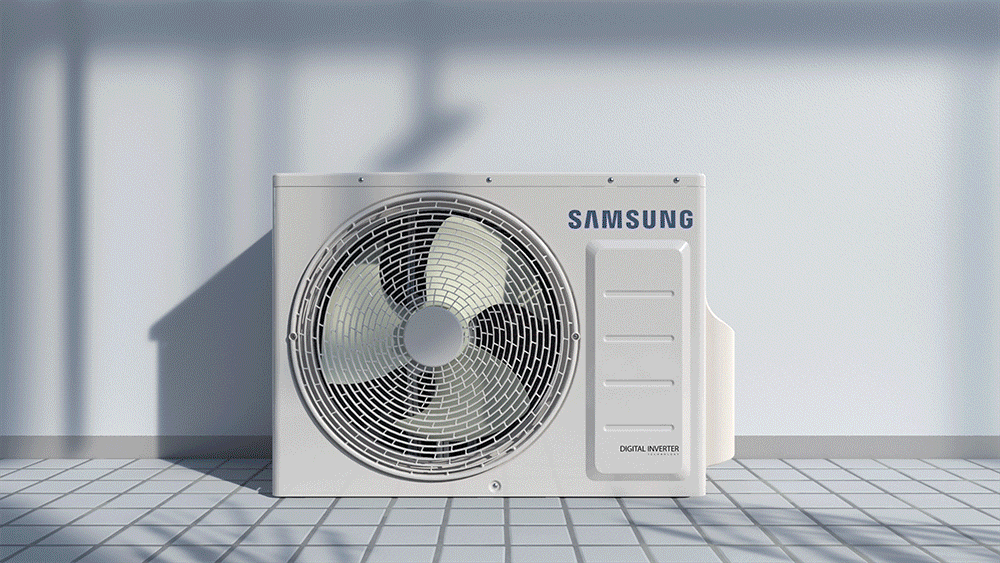In central air conditioning systems, air is passed over coils chilled by water, by brine, or by direct expansion of a volatile refrigerant. The chilled air is then distributed through ductwork. The water systems associated with air conditioning can be classified into three general categories: open recirculating cooling, air washers, and closed or open chilled water systems. In water treatment applications, open recirculating cooling systems are similar to open chilled water systems. The basic mechanical components of an air conditioning system are the air and water distribution systems, a refrigeration machine, and a heat rejection system. Refrigeration for air conditioning is usually provided by either absorption or compression cycles. Absorption refrigeration uses low-pressure steam or high-temperature hot water as the energy source, water as the refrigerant, and lithium bromide or lithium chloride as the absorbent. Compression refrigeration systems generally utilize a halocarbon compound or ammonia as the refrigerant. An internal combustion engine, turbine, or electric motor supplies the power to drive a centrifugal or positive displacement compressor. Refrigeration, or cooling, occurs when the liquid refrigerant absorbs heat by evaporation, generally at low temperature and pressure. When the refrigerant condenses, it releases heat to any available cooling medium, usually water or air.

The compressor energy input is approximately 3,000 Btu/hr per ton of refrigeration. Accordingly, normal heat rejection in a compression system approximates 15,000 Btu/hr per ton of refrigeration, requiring evaporation of about 2 gal/hr of cooling water. Compression refrigeration systems require a cooling water circulation rate of approximately 3 gpm per ton of refrigeration, with a 10°F temperature drop across the cooling tower. The major energy consumer in a compression refrigeration system is the compressor, which is designed to operate at a certain head pressure for a given load. This pressure equals the refrigerant pressure in the condenser. The term "high head pressure" refers to condenser pressure that is higher than it should be at a specific load condition.High head pressure can be costly in two ways. First, it presents the danger of a system shutdown; a safety control will stop the compressor motor when the safe maximum head pressure is exceeded in the compressor. Second, an increase in power consumption results when a compressor operates at greater than design head pressure. Fouled condenser tubes are a common cause of high head pressures. Fouling increases the resistance to heat transfer from the refrigerant to the cooling water. In order to maintain the same heat transfer rate, the temperature of the refrigerant must be increased. The compressor fulfills this need by increasing the pressure at which the refrigerant is condensed. With a centrifugal chiller, a 1°F increase in condensing temperature increases compressor energy consumption by approximately 1.7%. Fouling and the formation of scale in absorption systems also reduce operating efficiency. Because the highest water temperatures exist in the condenser, deposition first occurs in this unit. Under extreme conditions, scale formation can also occur in the absorber.
Deposition in the condenser imposes a higher back-pressure on the generator, so that increased steam or HTHW is required to liberate the refrigerant from the absorbent. The result is an increase in refrigerant vapor pressure and a greater temperature differential between the condensing water vapor and the cooling water. Although this compensates for the resistance to heat flow, more energy is required to provide the increased heat input.If water conditions are severe enough to cause deposition in the absorber, less refrigerant is removed by the absorber, and cooling capacity is reduced. The reduction in refrigerant circulation diminishes the ability of the equipment to satisfy cooling requirements. If the absorption rate in the absorber is reduced while the absorbent is heated above the normal temperature in the generator, the danger of over-concentrating the brine solution also exists. This over-concentration can cause crystallization of the brine, leading to a system shutdown.
Fouling and scale formation waste energy and can ultimately cause unscheduled system shutdown. Effective water treatment can minimize the possibility of high head pressure and excessive steam consumption caused by condenser deposition. Corrosion can cause problems in either the open recirculating or chilled water circuits. When corrosion is not properly controlled, the resulting corrosion products inhibit heat transfer, increasing energy consumption in the same manner as fouling and scale formation. Unchecked corrosion can cause heat exchanger leaks and catastrophic system failures. In any cooling application, attention to cooling tower operation is important. Proper tower maintenance maximizes cooling efficiency, or ability to reject heat. This is critical for continuously running refrigeration machinery at full load conditions. For best performance, the cooling tower fill should be kept clean and protected from deterioration. The water distrib
